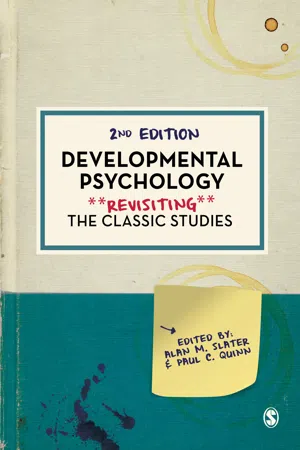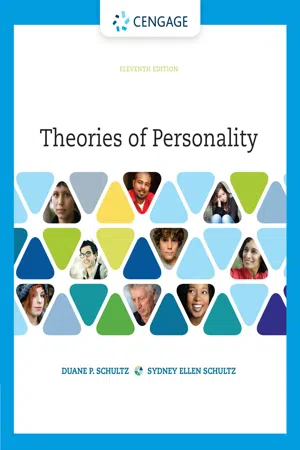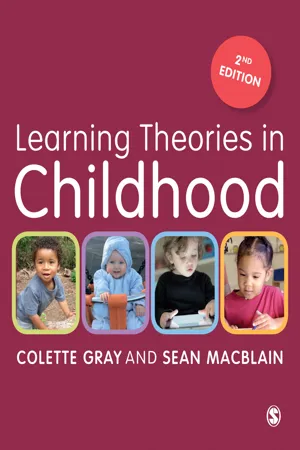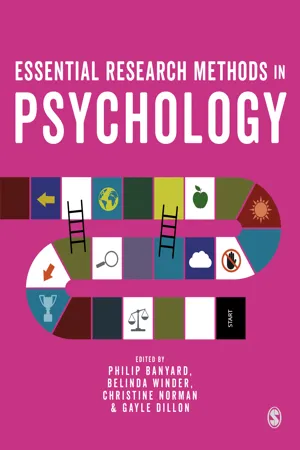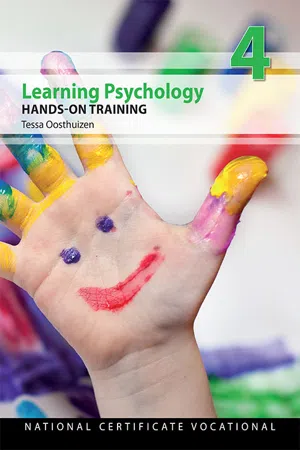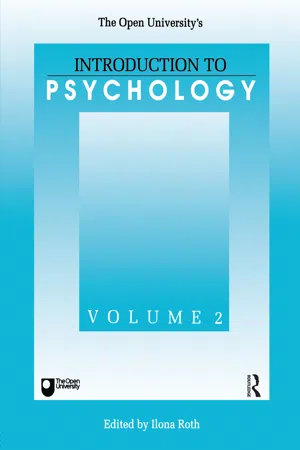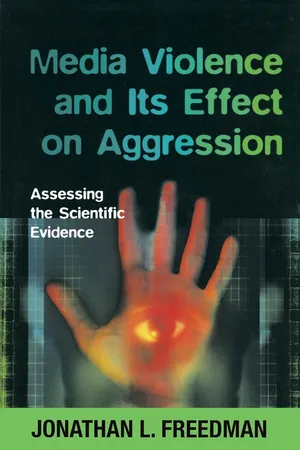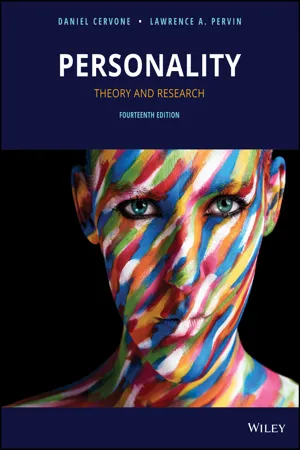Psychology
Bandura Bobo Doll
The Bandura Bobo Doll experiment was conducted by psychologist Albert Bandura to study the effects of observational learning on aggressive behavior. Children who observed adults behaving aggressively towards a Bobo doll were more likely to imitate the behavior when given the opportunity to interact with the doll themselves. This experiment provided important insights into the role of social learning in shaping behavior.
Written by Perlego with AI-assistance
Related key terms
1 of 5
10 Key excerpts on "Bandura Bobo Doll"
- eBook - ePub
Developmental Psychology
Revisiting the Classic Studies
- Alan M Slater, Paul C Quinn, Alan M Slater, Paul C Quinn(Authors)
- 2020(Publication Date)
- SAGE Publications Ltd(Publisher)
Many researchers modified key aspects of the original Bobo doll study in subsequent investigations designed to test the extent to which children would learn aggressive behavior in a variety of contexts and under varying conditions. For example, Bandura, Ross, and Ross (1963) themselves followed up on their initial study by conducting a similar study in which children watched a film of an adult model aggressing against a Bobo doll or a film that included an adult dressed as a cat with cartoon features aggressing against a Bobo doll. Children who had watched the films of aggressive acts were as likely to imitate the acts of aggression as were those children who had viewed the live model acting out the aggression, and all three experimental groups engaged in more aggressive behavior than the control group that had not witnessed an aggressive model.Along with questions regarding ethics, generalizability, and validity, some critics have questioned whether the Bobo doll study constitutes evidence regarding children’s imitation of aggression or merely behaviors the children regarded as play. This argument hinges on how aggression is defined. Contemporary researchers generally define aggression as an act perpetrated by one individual that is intended to cause physical, psychological, or social harm to another (Ostrov, Kamper-DeMarco, Blakely-McClure, Perry, & Mutignani, 2019). It is plausible that the intention to harm was missing from children’s imitative behaviors toward the Bobo doll, even if by their nature (e.g., kicking, hitting) they seem aggressive. Regardless of whether the children were engaging in aggressive acts with the intent to cause harm or merely playing, the main takeaway message remains the same. Namely, children can learn to engage in new behaviors by observing and imitating models, even if no rewards or punishments are attached to the behaviors.Conclusion: How the Study Advanced Thinking, but How Thinking has Subsequently Advanced
B - No longer available |Learn more
- Duane P. Schultz; Sydney Ellen Schultz, Duane Schultz, Sydney Schultz(Authors)
- 2020(Publication Date)
- Cengage Learning EMEA(Publisher)
Chapter 13: Albert Bandura: Modeling Theory 343 Copyright 2017 Cengage Learning. All Rights Reserved. May not be copied, scanned, or duplicated, in whole or in part. Due to electronic rights, some third party content may be suppressed from the eBook and/or eChapter(s). Editorial review has deemed that any suppressed content does not materially affect the overall learning experience. Cengage Learning reserves the right to remove additional content at any time if subsequent rights restrictions require it. before and to strengthen or weaken existing responses. Bandura ’ s now-classic demon-stration of modeling involves the Bobo doll, an inflatable plastic figure about 4 feet tall (Bandura, Ross, & Ross, 1963). In Bandura ’ s studies, preschool children watched an adult hit and kick Bobo. While attacking the doll, the adult model shouted, “ Sock him in the nose! ” and “ Throw him in the air! ” When the children were left alone with the doll, they modeled their behavior after the example they had just witnessed. Their behavior was compared with that of a control group of children who had not seen the model attack the Bobo doll. The experi-mental group was found to be twice as aggressive as the control group. The intensity of the aggressive behavior remained the same in the experimental sub-jects whether the model was seen live, on television, or as a cartoon character. The effect of the model in all three media was to elicit aggressive behavior that was not displayed with the same strength by children who had not seen the models. Other Modeling Studies In his early research on the impact of modeling on learning, Bandura compared the behavior of parents of two groups of children (Bandura & Walters, 1963). One group consisted of highly aggressive children, the other of more inhibited children. According to Bandura ’ s theory, the children ’ s behavior should reflect their parents ’ behavior. - eBook - PDF
- Colette Gray, Sean MacBlain(Authors)
- 2015(Publication Date)
- SAGE Publications Ltd(Publisher)
Of interest was the fact that the children were not being rewarded for hitting the doll. They were in fact engaging in behaviours they had observed but that had not been reinforced. Learning was, therefore, taking place, not as behaviourists of the time would have argued, as a result of reinforcement, but as a result of observation. Bandura believed that the stimulus–response explanation of learning proposed by the early behaviourists was overly simplistic and did not go far enough in explaining human behaviour and emotions. Take time to look at the video clip link below, in which Albert Bandura explains his thinking behind the Bobo doll experiment and offers some original ‘clips’ taken from the initial experiments. Weblink ‘Bandura’s Bobo Doll Experiment’, available at: www.youtube.com/watch?v=dmBqwWlJg8U (accessed 11.4.15). Whilst Bandura acknowledged that classical and operant conditioning (see Chapter 4) could go some way in explaining social learning, he also argued that there were two other factors that were of great importance, namely imitation and identification. Bandura suggested that both of these factors provided for acceler- ated social learning in children. With the first of these, children imitate the behaviours of others whilst, with the second, new learning is assimilated into existing concepts that have already been internalized by the child. In this way, Bandura argued, whole patterns of behaving become internalized by children such that they then act upon new situations in the way they think that the adults from whom they have modelled their behaviour would behave. In the case of Tracey and Ben, they have internalized quite different patterns of behaviour that have been modelled by the adults in their families and by significant others they have come into contact with during those crucial pre-school years, and their first years of schooling. - eBook - ePub
- Philip Banyard, Belinda Winder, Christine Norman, Gayle Dillon, Philip Banyard, Belinda Winder, Christine Norman, Gayle Dillon(Authors)
- 2022(Publication Date)
- SAGE Publications Ltd(Publisher)
controlled experiment to investigate if social behaviours, such as aggression, could be learned by the observation and imitation of others. This experimental study by Bandura et al. (1961) focused on the transmission of aggression through imitation of aggressive models. In the context of psychology, a model is a person or persons which performs behaviours in psychological studies. Such behaviours may or may not be imitated by the participants in the study.Figure 2.3 Bobo doll© Okhanm, Wikimedia CommonsInteresting fact‘Psychology Pop Idol’
Psychologists of the 20th century were put to a popularity contest to determine who were the most influential psychologists of that period. The rankings were based on three criteria: number of journal citations; number of introductory textbook citations; and the survey responses of 1725 members of the American Psychological Society, who were asked to list who they felt were the most influential psychologists of the 20th century. Albert Bandura placed fourth on that list, very impressive! Can you think of other prominent psychologists who may have appeared high on this list? The full list can be found in Haggbloom et al. (2002) in the Review of General Psychology, 6, 2.The theory which the study was designed to test is theSocial Learning Theory. Social Learning Theory argues behaviour can be learned throughvicarious learning, which is learning via the observation of others’ behaviours. Social Learning Theory emphasises the importance of observing and modelling behaviours, attitudes, and the emotional reactions of others. This may appear more obvious today, but up until the point of Bandura and colleagues’ Bobo doll studies,behaviourismwas the dominant psychological paradigm in the 20th century.Behaviourism emphasised the role of environmental factors in shaping behaviour, to the near exclusion of innate or cognitive factors. Behaviourists argued that we learn new behaviour through classical and operant conditioning, as demonstrated in the seminal works of Pavlov (1927) and Skinner (1953) respectively. Essentially, the behaviourist approach argued that people learned through performing their own actions and that the subsequent positive or negative feedback they received would shape future behaviour. Bandura spotted a problem with this way of learning, arguing that learning would be extremely laborious and dangerous if individuals had to learn all behaviour via their own actions (Bandura & Walters, 1977). Imagine if you were a child having to learn the correct way to cross a busy road safely through trial and error learning! Instead, he argued we are able to first observe how this is done successfully and then imitate that behaviour. Therefore, Bandura argued that learning is not purely behavioural but that it is a cognitive process that takes place in a social context. - eBook - ePub
OCR Psychology
AS Core Studies and Psychological Investigations
- Philip Banyard, Cara Flanagan(Authors)
- 2013(Publication Date)
- Psychology Press(Publisher)
matched participants design.- The effects of model’s gender. Some children watched a male model and others watched a female model.
- The effects of child’s gender. Half the participants were boys and half were girls.
Phase 2: aggression arousalThe children were taken to another room where they were then allowed to play with some attractive toys. This play was abruptly stopped in order to make the children feel frustrated.Phased 3: test for delayed imitation The children were taken to another room where they were observed playing with toys, including the Bobo doll.Key term: social learningIn this article Bandura et al. refer to ‘imitative learning’, i.e. learning to perform a new behaviour as a consequence of imitating a model’s behaviour. This later became known as social learning because learning takes place in a social context – it is ‘social’ because it involves watching other people.Results
The children who observed the aggressive model were more likely to exhibit the same specific acts of violence shown by the model than the other two groups, for example they said ‘pow’ and hit the doll with a mallet.The children who observed the aggressive model were later generally more aggressive, although the difference between groups was very small. The boys were more affected by same-sex models than the girls were. Both boys and girls were more affected by the male models in terms of physical (but not verbal) aggressiveness.Discussion
The results showed that children do imitate behaviour of models beyond the specific situation where the behaviour was viewed. The aggressive models affected behaviour in two ways: they provided information about specific behaviours and also generally increased levels of aggression. Male models appear to have a stronger influence possibly because aggression is a masculine-type behaviour and therefore boys and girls attend more readily to male models.A Bobo doll is an inflatable doll about five-foot tall. There is a weight in the bottom that makes it bob back up when you knock it down. - eBook - PDF
- T Oosthuizen(Author)
- 2014(Publication Date)
- Future Managers(Publisher)
In the experiment which was conducted in 1961, children watched a film of an adult hitting an inflatable doll. The doll was also thrown across the room and punched. Three endings were made. Group A saw only the doll being hit, Group B saw the adult being praised and rewarded for hitting the doll and Group C saw the adult being punished for hitting the doll. The children in Groups A and B imitated this aggressive behaviour and those in Group C were less aggressive. Think about the relevance of this study in terms of the television programmes that children watch. Theories in learning 5 Bandura identified three basic models of observational learning: 1. A live model , which involves an actual person demonstrating or acting out a behaviour. 2. A verbal instructional model , which involves descriptions and explanations of a desired behaviour. 3. A symbolic model , which involves real or fictional characters displaying behaviours in books, films, television programmes, etc. The effects of modeling on behaviour are: • New behaviours are learned. • It increases the frequency of previously learned behaviours. • It may encourage negative behaviours. • It may encourage the frequency of similar behaviours. If we look at this in a classroom context, we may see the following: • Sandile learns to write the letter S by watching his teacher. • Anne sees other children playing dominoes and decides to join in. • Mika watches Sanet pull faces at other children and copies her. • Allan struggles with reading but now at least looks at pictures in books instead of avoiding them as he has done in the past. 1.2 Implications You should agree that Bandura’s theory of social learning has some impact on the learning of adults and children. It is thus important that you take note of the following points so that you can maximise the learning in your class: • People learn by observing others so, you need to make sure that the best models are available to learn from. - eBook - ePub
- Ilona Roth(Author)
- 2020(Publication Date)
- Psychology Press(Publisher)
instrumental learning , which was discussed in detail in Chapter 6. According to instrumental conditioning theory, the probability that behaviour will be repeated on later occasions is increased as a result of positive reinforcement.Bandura, one of the foremost proponents of social learning theory, has suggested that another process known as modelling is also involved in aggressive behaviour. This is the process whereby people learn new behaviour, including aggression, through observation of the actions of others (called ‘models’) and of the results of their actions.BOX E The Bobo doll studies (Bandura et al ., 1963)
These studies involved aggression towards an inanimate object, a large inflatable ‘Bobo doll’. Children in the experimental group watched an adult model who behaved in an aggressive way towards the doll when left in a playroom by the researcher. (Children saw the adult model through a one-way mirror.) The model performed a number of specific, novel aggressive acts towards the doll, such as striking it with a hammer, throwing it in the air, punching, kicking it and saying things like Tow . . . boom . . . boom’. These particular actions were used because the children would be unlikely to perform them spontaneously. Thus, if the children displayed them the researcher could be confident that they were imitating the model.After they had seen the model, the children were left in the playroom for 10 to 20 minutes and their behaviour was observed by the researchers. A control group of children was not shown the model before being allowed to play in the playroom with the same toys as the experimental group. The experimental group’s behaviour towards the doll very closely resembled that of the model, whereas the control group did not display any of these actions. These results suggested that the children who had witnessed the model’s aggression had imitated the behaviour of the model. - eBook - PDF
Media Violence and its Effect on Aggression
Assessing the Scientific Evidence
- Jonathan Freedman(Author)
- 2017(Publication Date)
- University of Toronto Press(Publisher)
However, it seems clear to me that no aggression is involved. In these studies, typically some children watch a movie in which an adult or a child punches a Bobo doll and performs other similar behaviours, while other children watch a film in which the adult or child does not punch the doll but instead hugs it and performs other similar behaviours. The children are then given a chance to play with the Bobo doll, their behaviour is ob-served, and punching and kicking are considered aggressive acts. The children who watched the adult punching the doll tend to imitate the adult -they have presumably learned what one is supposed to do with a Bobo doll; those who have not seen the adult punch the doll tend to punch it less, presumably because they are less sure how one is supposed to treat Bobo. Thus, the research tells us quite a lot about imitation, but in my opinion nothing about aggression, because none occurs. This position is supported by some of the researchers in the area. Kniveton and colleagues conducted several experiments on the effects of media violence on aggression. In three studies (Kniveton, 1973; Kniveton & Stephenson, 1970; Kniveton & Stephenson, 1973) they used the treatment of a Bozo doll as the measure of aggression and found that the aggressive film increased aggression. In their last experiment (Kniveton & Stephenson, 1975) they used a measure based on interper-sonal behaviour and found non-supportive results. The authors were obviously impressed by the contrast between the findings using the two measures. In their paper, the authors comment: This limited effect of the film in itself is an important finding, and undermines somewhat the position of recent commentators who base their alarmist conclu-sions largely on the results of experiments portraying doll-directed attacks/ The tabulation of results given earlier included all the relevant stud-ies. - eBook - PDF
Personality
Theory and Research
- Daniel Cervone, Lawrence A. Pervin(Authors)
- 2018(Publication Date)
- Wiley(Publisher)
Bandura’s research on modeling clearly has important social implications. Acquisition versus Performance An important part of the theory of modeling is the distinction between acquisition and perfor- mance. A new, complex pattern of behavior can be learned or acquired regardless of reinforcers, but whether or not the behavior is performed will depend on rewards and punishments. Consider, for example, the classic study by Bandura and his associates to illustrate this distinction (Ban- dura, Ross, & Ross, 1963). In this study, three groups of children observed a model expressing aggressive behavior toward a plastic Bobo doll. In the first group, the aggressive behavior by the model was not followed by any consequences (No Consequences); in the second group, the model’s aggressive behavior was followed by rewards (Reward); and in the third group it was followed by punishment (Punishment). Following observation of the model’s aggressive behav- ior, children from the three groups were presented with two conditions. In the first condition, the children were left alone in a room with many toys, including a Bobo doll. They were then observed through a one-way mirror to see if they would express the aggressive behaviors of the model (No Incentive condition). In the next condition, the children were given attractive incen- tives for reproducing the model’s behavior (Positive Incentive condition). Two relevant questions can be asked. First, did the children behave aggressively when they were given an incentive to do so as opposed to when they were not? Many more imitative aggressive behaviors were shown in the Incentive condition than in the No Incentive condition (Figure 12.3). In other words, the children had learned (acquired) many aggressive behaviors that were not performed under the No Incentive condition but were performed under the Incentive condition. This result demonstrated the use of the distinction between acquisition and perfor- mance. - eBook - ePub
The War System
An Interdisciplinary Approach
- Richard Falk, Samuel S Kim(Authors)
- 2019(Publication Date)
- Taylor & Francis(Publisher)
20The reinforcement potency of the modeling process in facilitating aggressive behavior was further confirmed in another experiment, in which children were exposed to film-mediated aggressive models. Moreover, this experiment produced significant sexual variables: boys, compared to girls, exhibited significantly more total aggression (t = 2.69, p < .01), more imitative aggression (t = 2.82, p < .005), more aggressive gun play (z = 3.38, p < .001), and more nonimitative aggressive behavior (t = 2.98, p < .005), while girls were more inclined to sit on the Bobo doll but refrained from punching it (z = 3.47, p < .001) (Bandura et al. 1963:8).Similarly, experiments with adult audiences hardly support the contention of Eibl-Eibesfeldt (and of the TV and movie industry) that fantasy aggression works as a socially safe and vicarious outlet for the supposedly pent-up aggressive energy within the audience (Berkowitz and Rawlings 1963; Berkowitz et al. 1963). Instead of providing an easy and safe cathartic outlet, watching filmed violence increases the probability that someone in the audience will behave aggressively in a later situation. The more recent works prepared for the National Commission on the Causes and Prevention of Violence (1969) and for the Surgeon General (1972) on the impact of televised violence also present strong evidence, suggesting a causal relationship between witnessed violence and an observer's subsequent aggressive behavior.Experimental data are equally damaging to Lorenz's proposal of aggressive sporting contests as a cathartic outlet. Eysenck (1966), drawing on his own earlier experiments as well as on those of others, states that there is a consistent tendency for persons aggressive in one context to be aggressive in another context. He concludes that there are positive correlations—as high as + 0.4 for various groups—between instances and expressions of aggression. Goldstein and Arms (1971) conducted field interviews at the 1969 Army-Navy football game and also at an Army-Temple gymnastics meet (during the same month) in order to compare the hostility of spectators before and after the games, using the Buss-Durkee inventory with the possible range of hostility scores from 0 to 28. Results: regardless of the subjects' preferred team, post-football game hostility was greater than pregame (F = 5.29, df = 1/144, p < .025), showing little effect for preferred team (F < 1.0) or for the interaction effect (F < 1.0), while the premeet hostility mean of gymnastics spectators (12.00) was not significantly different from the postmeet hostility mean (12.71, t = .66, df = 79, p < .20), showing that hostility did not rise significantly as a result of observing a physically nonaggressive sport event. They arrive at the logical conclusion: regardless of team preference and the outcome of the game, watching an aggressive sport leads to an increase in hostility among spectators.
Index pages curate the most relevant extracts from our library of academic textbooks. They’ve been created using an in-house natural language model (NLM), each adding context and meaning to key research topics.
